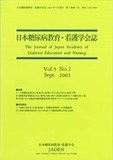Japanese
English
- 有料閲覧
- Abstract 文献概要
- 参考文献 Reference
本研究は,糖尿病食事療法の自己管理行動に関するこれまでの調査結果をもとに,蓄積されたデータとある程度一致し,臨床への応用を可能とするような数理モデルの開発を試みる.第1報では,食事療法の実行度について検討し,それを単純化することにより力学現象と対応させながら,基礎となるモデルの作成を行った.結果,自己管理の実行度v(t)に関して,以下の微分方程式が成り立った.
dv(t)/dt = N(t) - f(t) - Ah(v(t) - h) H(v(t) - h) - Al(l - v(t)) H(l - v(t))
ただし,ここでいうN(t)は,実行度を上げるように看護が関与しコントロールできる力,f(t)は,社会生活のなかで実行度を低下させるような負の力すべてを指す.また,Ah(v(t)-h) H(v(t) - h)およびAl(l - v(t)) H(l - v(t))は,実行度が変わることによって生じる負の力である.この基礎的数理モデルより,自己管理の実行度をどのようにコントロールすることが望ましいのか,糖尿病患者が食事療法をできるだけ長期に維持するためには,いつどのような力で看護を提供していけばよいかという2つの数学的課題が導かれた.
The purpose of this study was to develop the mathematical model for dietary self-management of patients with diabetes mellitus and for their nursing, based upon the accumulation of research. In this first report, I tried to make a fundamental mathematical model by adopting the correspondence between patients' self-management behavior and dynamics. As a result, the following differential equation as regards the patients' self-management behavior was formed. dv(t)/dt = N(t) - f(t) - Ah(v(t) - h) H(v(t) - h) - Al(l - v(t)) H(l - v(t))
N(t): nursing influence which makes patients' self-management behavior high. f(t): negative influence which makes patients' self-management behavior low in their social life. Ah(v(t) - h) H(v(t) - h)/Al(l - v(t)) H(l - v(t)): negative influence which depends on patients' self-management level.
Analyzing this fundamental mathematical model would give remarkable suggestions related to the patients' self-management, for example, how nurses should control the patients' self-management behavior, how nurses should use their influence to maintain the patients' self-management behavior.
Copyright © 2001, Japan Academy of Diabetes Education and Nursing. All rights reserved.


